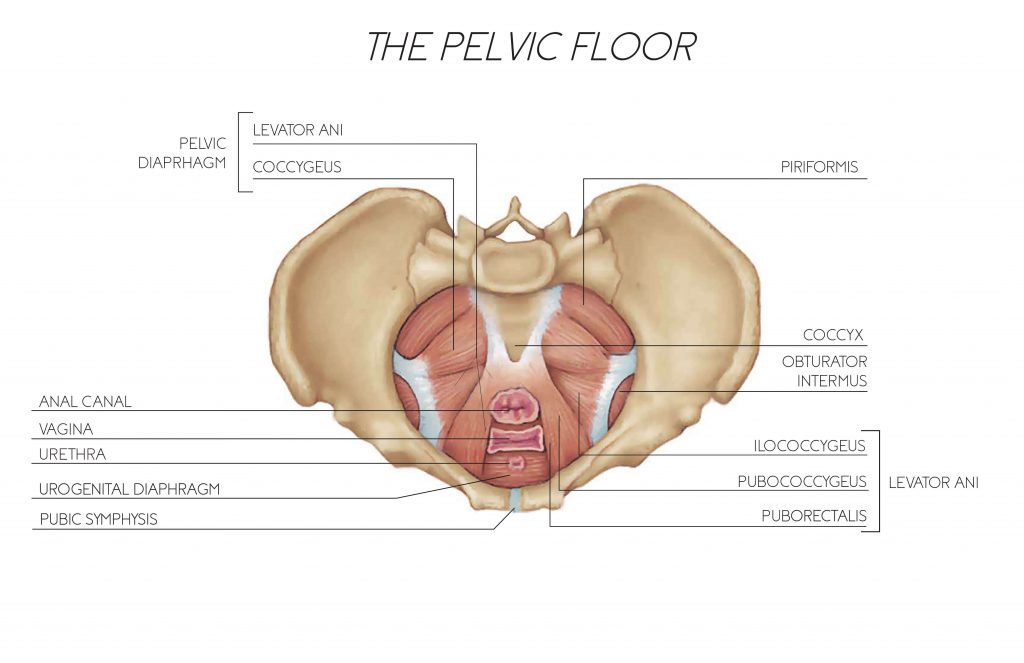Everyone has one, but no one really talks about them. When you are starting to suffer from symptoms of pelvic floor disorders, such as pelvic pain, heavy bleeding, urinary leakage, pressure or a bulge in the pelvis, the first thought you think of probably isn’t your pelvic floor. So, let’s talk about what is your pelvic floor.
Your pelvic floor is made up of layers of muscle that work like a hammock, running between your pubic bone and tailbone, and it serves multiple functions: 1–3
- It helps to support your pelvic organs (bladder, reproductive organs and bowels)
- It supports your baby during pregnancy.
- It maintains your bladder & bowel control
- It contributes to your sexual sensations

The pelvic floor, also known as the pelvic diaphragm, is composed from two major components; a group of muscles known as the levator ani muscles and the coccygeus muscle. The levator ani is a broad sheet of muscles composed of the puborectalis, pubococcygeus and iliococcygeus.
Issues You May Face
Healthcare providers and scientists have tended in the past to lump all pelvic floor disorders together, but as the medical community has collected more data on these disorders, they have grown to recognize that the specific disorders that women endure tend to fall into different categories. The two most common pelvic floor disorder categories are of pelvic floor support or of constriction function.
If you have a pelvic floor disorder that compromises support, you may experience pelvic floor prolapse, where weak pelvic floor muscles allow for pelvic organs to drop. When this occurs, the organs may press on the inside of your vagina or may protrude out of your vagina.
If instead you have a condition that involves compromised constriction of your pelvic floor muscles, you may experience incontinence and have trouble holding in your urine or feces because you struggle to relax the muscles – therefore pushing things out..2 Alternatively, you may have the opposite problem and struggle to urinate or become constipated because you struggle to contract the muscles – and therefore keep things in.
Ways to Improve Your Pelvic Health
There are multiple ways to improve your pelvic health if you are experiencing any symptoms. The first step you should take it talking to your doctor and learning more before you jump in and start trying any exercises on your own. If you do not fully understand what you have, then you stand a chance at causing more harm than good. Here are a few ways that you can improve your pelvic health:
- Physical Therapy – Exercises that are specifically designed to train your pelvic floor, and a trained physician who can teach you how to correctly do the exercises.
- Nutrition – Eating and drinking specific items that support pelvic floor health and avoiding items that can cause inflammation
- Lifestyle Changes – Dropping bad habits such as smoking and trying out some yoga and mediation
There is ongoing research to understand the anatomy of these muscles and how these muscles contribute to the important functions of the pelvic floor. As more data is collected, experts are better able to develop targeted approaches to help each individual woman with her unique pelvic floor condition. This is shown in the recent years as new specialties have been created and focused on women’s pelvic health.
Seek Professional Help
If you are experience any symptoms for your pelvic floor, it can be time to see a doctor. Your primary care physician may be the first person you go to see but you will want to talk to a specialist who is specifically trained in pelvic health.
















